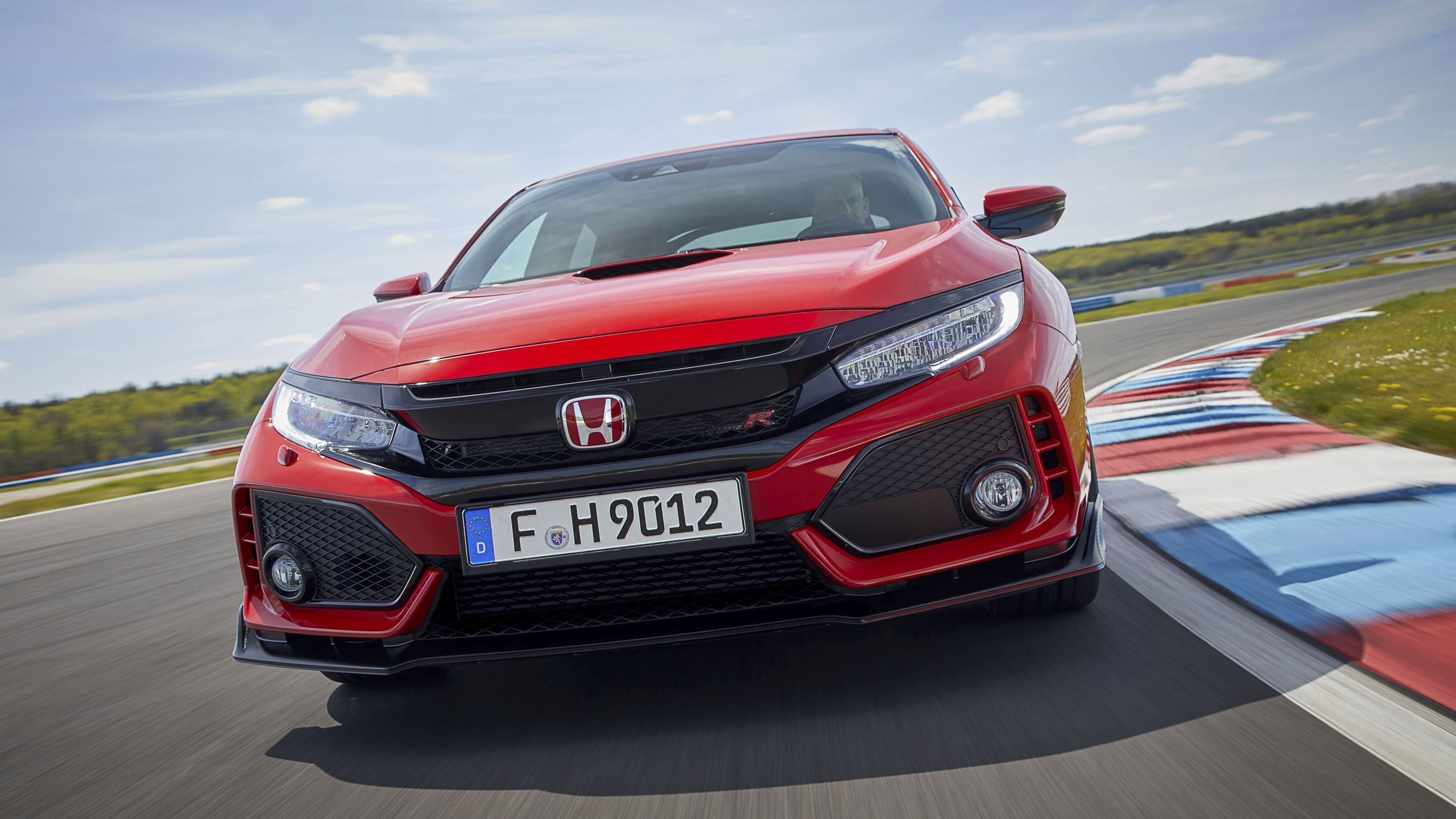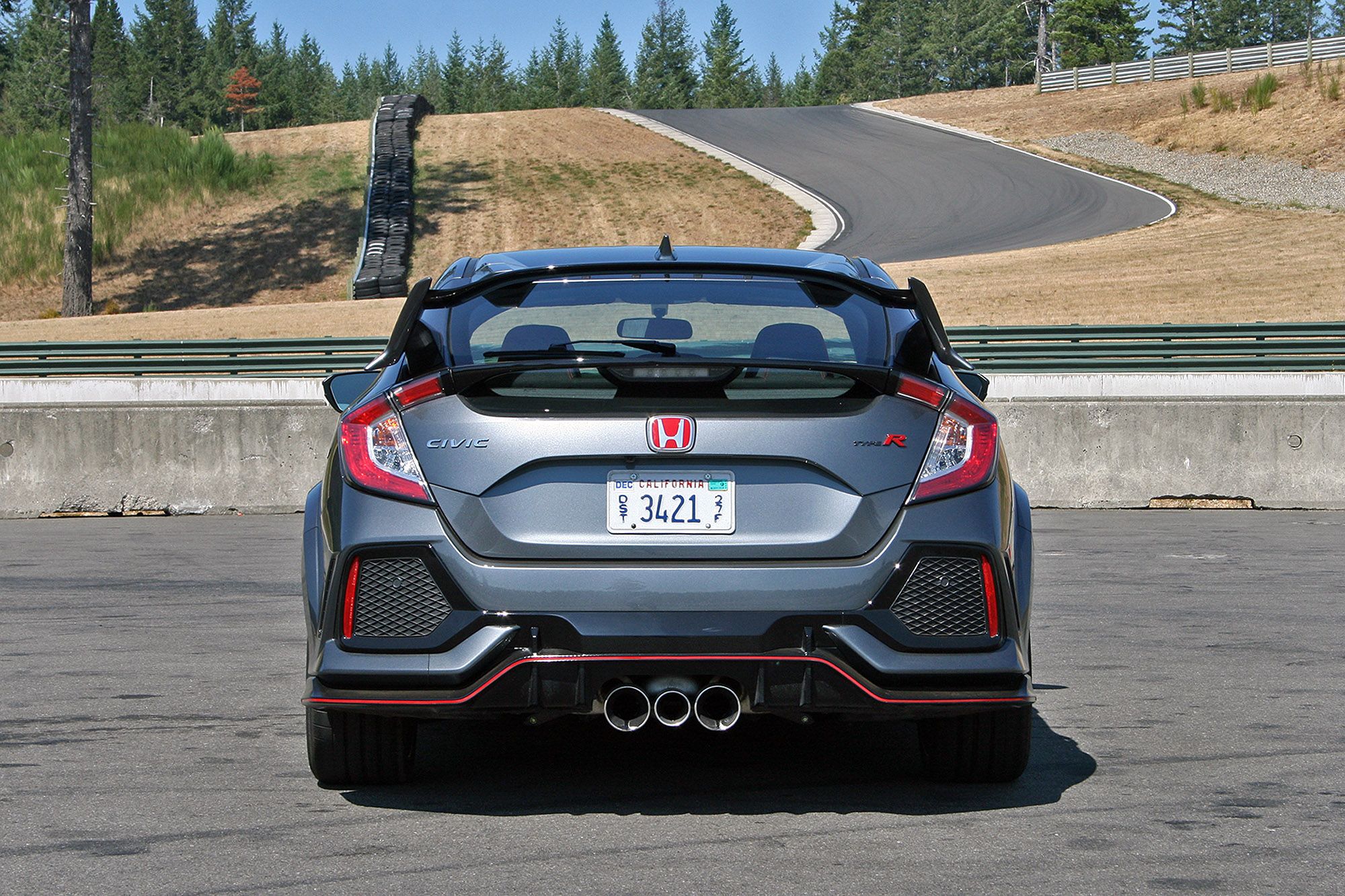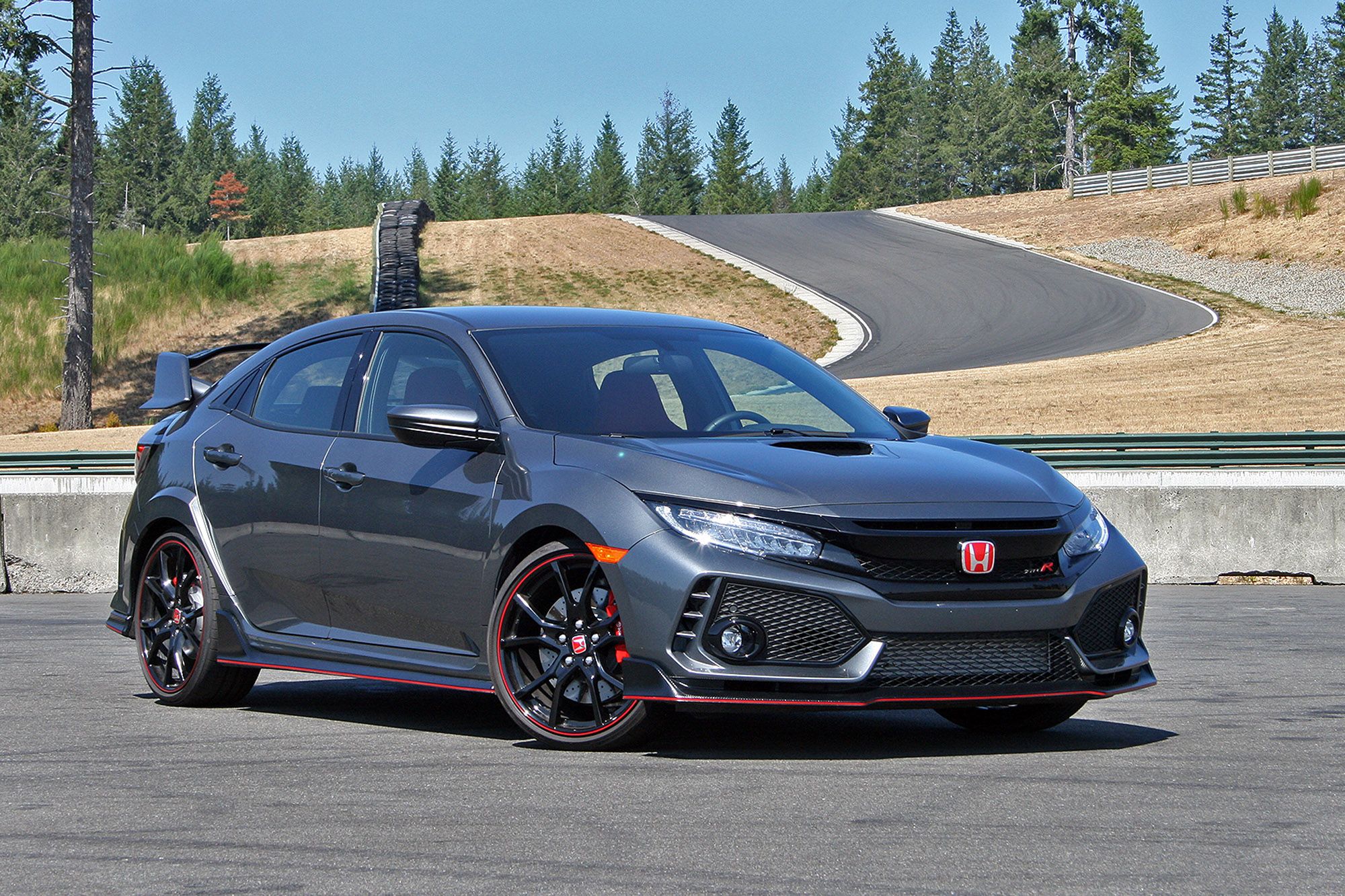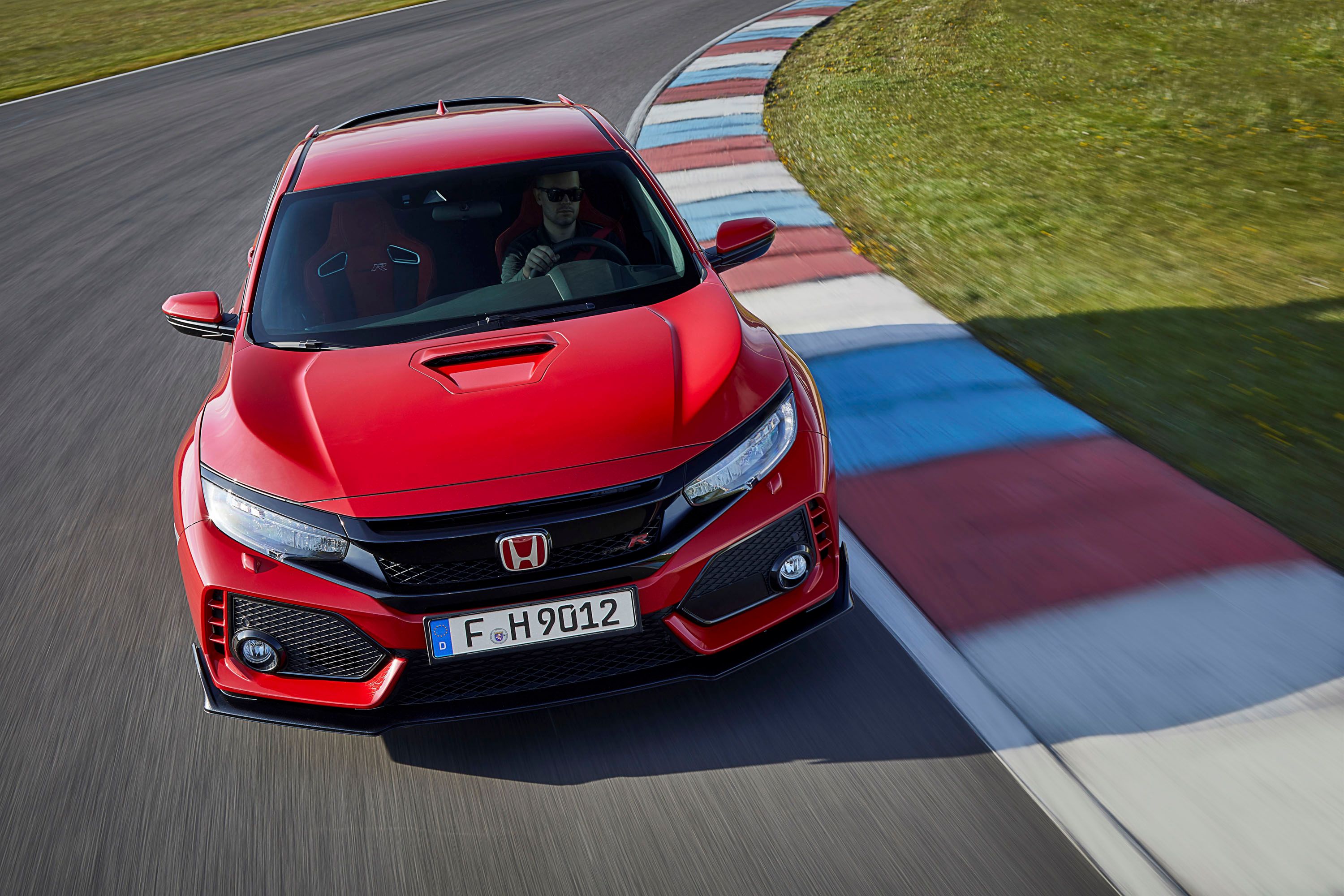The entry of the 2017 Honda Civic Type R into the U.S. market is big news – both for Honda fans and the hot hatch segment. The new Type R will only add fuel to the already large flame burning between the Ford Focus RS, Volkswagen Golf R, and Subaru WRX STI. Needless to say, Honda had to bring its A-game. Turning the 10th-generation Civic into competitive hot hatch wouldn’t be an easy task, but the Type R had to perform as good or better to be taken seriously. Well, thanks to time behind the Type R’s wheel, both on the track and bombing down mountain roads, it’s clear Honda has built a worthy rival for its global counterparts.
It all starts with the bones of Honda’s 10th-generation Civic, which debuted back in 2015. Even the base car was designed with a stronger structure for added rigidity, knowing in two years’ time, the Type R would need the extra strength. The same is true for the Civic hatchback, which is new for 2017. But Honda didn’t stop there. Engineers added even more structural adhesives to bind the bodywork together. A stiffer yet lighter suspension with adaptive dampers, bigger wheels, and stickier tires were added, too. And of course, Honda dumped that 1.5-liter turbocharged four-cylinder for something with a bit more power – a 2.0-liter turbo-four with 132 more horsepower and 133 pound-feet more torque. Add to that the aggressive yet functional aerodynamic features and heavily bolstered front bucket seats, and the Type R’s pedigree begins to take shape.
Continue reading for more info on the 2017 Honda Civic Type R.
Outside
Note: Honda Civic pictured here.
The standard Honda Civic Hatch is admittedly not the prettiest vehicle rolling on today’s roads. It has an overly aggressive stance with fake air scoops and vents that give the it feel as if it’s trying too hard. But transfer that look to the 306-horsepower Civic Type R, and the aesthetics begin to make sense. The angular lines and protruding vents are more at home on the Type R, though most remain less functional than their shape and size would suggest.
Up front, the Type R has a low-hanging chin splitter that helps with downforce. Wider front fenders allow air to pass through for cooling. The hood wears a functional scoop that pulls air behind the transversely mounted engine for both cooling and reduction of under-hood lift. Air ducts under the front bumper direct airflow at the front Brembo brakes. The rear fenders are wider, too, helping house those widened 245-series tires.
Out back, there’s no mistaking that massive wing over the rear window. Honda says it has a shape specifically designed for downforce at higher speeds. Down low, the fascia continues the lower carbon fiber and red trim found on the front bumper and side skirts. Then, taking center stage, the Type R has three exhaust pipes coming right from the middle of the bumper. Why three pipes? Well, that’s answered in the powertrain section below.
Inside
Note: Honda Civic Type R pictured here.
Honda didn’t do much with the interior’s general design or layout, but there are plenty of updates specific to the Type R. First and foremost are those front bucket seats. They have tall bolsters designed to keep occupants seated firming, regardless of the cornering forces. They come covered in black and red suede, adding to the vibe and the appearance. The center armrest is also suede, while red leather extends to the flat-bottom steering wheel and plastic accents along the dashboard.
The Type R’s signature red hue is also seen in the gauge cluster. Gone are the white accents in the standard Civic’s gauge cluster – replaced by the Type R’s menacing, race-inspired color. The infotainment system is also sporting a red hue that matches the gauge clusters. A red start/stop button awakens the forced-induction engine and the Type R’s iconic aluminum shift knob returns. Red seatbelts hold everyone in place. The rear center seat is sacrificed in the name of weight saving, trading the seatbelt, bottom cushion, and folding armrest for a piece of molded plastic with two cup holders.
Under the Hood
Note: Honda Civic Type R engine pictured here.
Of course, the big change comes in the powertrain department. Gone is the 174-horsepower, 1.5-liter turbo four-cylinder from the standard Civic. Not even the 180-horse version in the Civic Sport or the 205-horse version in the Civic Si would do. No, Honda uses a 2.0-liter turbo-four for the Civic Type R. This all-aluminum engine gets direct fuel injection, sodium-filled exhaust valves, a water-cooled exhaust manifold, a lightweight rotating assembly, and an electronic waste gate on the low-inertia turbo. The engine even uses the old trick of oil jets to cool and lubricate the undersides of the pistons. Add to that Honda’s legendary VTEC system, and the little 2.0-liter kicks out 306 horsepower at 6,500 rpm and 295 pound-feet of torque from 3,500 rpm up to 4,500 rpm.
Honda pairs that with a quick-shifting six-speed manual transmission with a light clutch, making lighting fast shifts easy to rip through. Gear ratios are spread well, making the most of the power. I found myself using third and fourth gear nearly exclusively at The Ridge, only shifting into fifth on the long straight at speeds nearing 120 mph. Honda ensures the power isn’t wasted by dropping in a limited-slip front differential. This keeps the Type R from being a one-wheel wonder. Even accelerating hard from a roadside gravel pull-off, the Type R just digs and moves – no issues.
Drivetrain Specifications
|
Honda Civic Type R |
Honda Civic |
Honda Civic Sport |
|
|
Engine Type |
Turbocharged In-Line 4-Cylinder |
In-Line 4-Cylinder |
In-Line 4-Cylinder |
|
Displacement (cc) |
1,996 |
1,496 |
1,496 |
|
Horsepower (SAE net) |
306 HP @ 6,500 RPM |
174 HP @ 5,500 RPM |
180 HP @ 5,500 RPM |
|
Torque (SAE net) |
295 LB-FT @ 2,500-4,500 RPM |
167 LB-FT @ 1,800 RP M |
177 LB-FT @ 1,900 RPM |
|
Fuel economy (City/Highway/Combined) (mpg) |
22 / 28 / 25 |
32 / 42 / 36 |
29 / 38 / 33 |
|
Curb Weight (lbs.) |
3,117 |
2,822 |
2,871 |
Suspension, Steering, & Brakes
Honda couldn’t throw 306 horsepower into the Civic without upgrading its foundation. As such, the Civic Type R comes with a unique suspension setup. All four dampers are adaptive, meaning they vary in stiffness depending on the driver-selectable drive modes. They are soft and compliant in Comfort mode, a bit more firm in Sport mode, and stiff as a board in +R mode.
The Type R is front-wheel drive, unlike all of its competition. However, Honda has killed almost every hint of torque steer. Engineers use a front MacPherson strut design with a dual axis. That means the ball joint connections to the steering knuckle are on a separate yet parallel axis to the centerline of the MacPherson strut. This keeps the steering wheel from jerking when stepping on the throttle. Even that steering knuckle is unique to the Type R, being lighter and more rigid than the knuckle on the standard Civic.
Down to the numbers, Honda says the Type R’s front track is 62 millimeters wider, the spring rates are 200 percent stiffer, and the stabilizer bar is 170 percent firmer. In back, the track is 40 millimeters wider, the coil springs are 160 percent stiffer, and the anti-roll bar is a whopping 240 percent more effective. There’s no wonder the Civic Type R is able to hold a 1.02-g turn in a skidpad.
As for the wheels and tires, as mentioned, they are much larger and stickier than what’s found on the standard Civic. Here, the Type R uses Continental SportContact 6 tires sized at 245/30ZR-20 at all four corners. Even during my hot laps around The Ridge Motorsports Park, the tires did a fantastic job at maintaining grip, despite repeated laps from breakfast to lunch with eager journalists behind the wheel.
The same can be said for the large, 13.8-inch front and 12.0-inch rear Brembo brakes. They maintained a firm yet communicate pedal feel all day. The four-piston front brakes get extra cooling from air ducts and have drilled and vented rotors. The single-piston rear brakes clamp on solid rear rotors.
The High-Performance Result
It’s amazing how much horsepower automakers are able to squeeze from forced-injection four-cylinders these days. It wasn’t long ago it took a large V-8 to make over 300 horsepower. Now, Honda just needs two liters and a hairdryer. What’s more, the Civic Type R is EPA-estimated to get 22 mpg city, 28 mpg highway, and 25 mpg combined. That’s impressive.
It’s also amazing how Honda has skipped adding an AWD system to the Type R, yet can still keep up with the Ford Focus RS, Subaru WRX STI, and VW Golf R. That’s because AWD systems are heavy and add complexity. The Civic Type R focuses on being lighter and more agile. That’s evident in its 3,100-pound curb weight – a full 300 to 400 pounds lighter than the others.
On the track, that translates to a highly tactile driving experience that leaves little to want. On the road, it means the Civic Type R is a docile, efficient wolf in sheep’s clothing. Honda has certainly done its homework here, as the 2017 Civic Type R shoots to the top of the leader board in the highly competitive hot hatch segment. That leaves only one question: which would you buy?
References
Honda Civic Type R – Driven
Read our full driven review on the Honda Civic Type R.
Honda Civic Type R
Read our full review on the Honda Civic Type R.
2017 Honda Civic Hatchback – Driven
Read our full driven review on the Honda Civic Hatchback.
2017 Honda Civic Hatchback
Read our full review on the Honda Civic Hatchback.




